Step into the cobblestone streets of ancient Rome, and you’d be surprised just how familiar things might feel especially when it comes to food. Long before drive-thrus and food trucks, Romans were grabbing lunch on the go in bustling corners of the city known as thermopolia (singular: thermopolium). These ancient eateries were the original fast food joints, feeding everyone from busy traders to passing travelers with hot, hearty meals straight from terracotta pots.
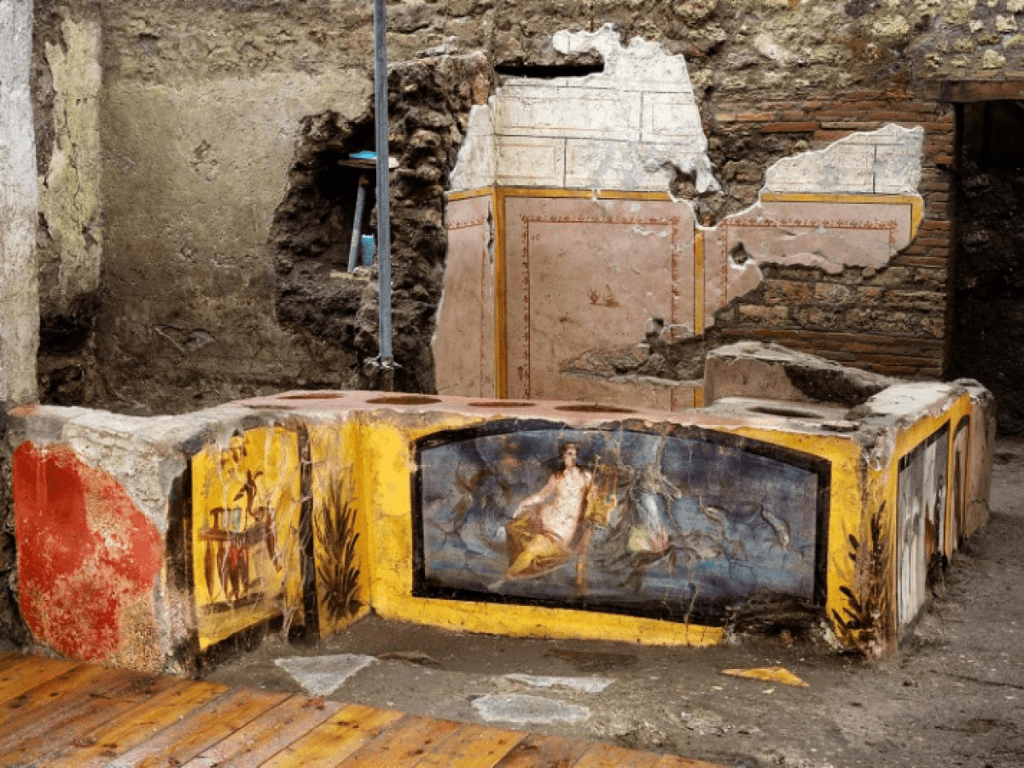
What Was a Thermopolium?
A thermopolium was essentially a small shop or tavern, often built into the front of a building along a main street. It featured a masonry counter embedded with large clay jars dolia that held hot dishes like stews, lentils, and wine. These counters often curved outward toward the street, making it easy for people to stop by, chat, and grab a warm serving of whatever was bubbling inside.
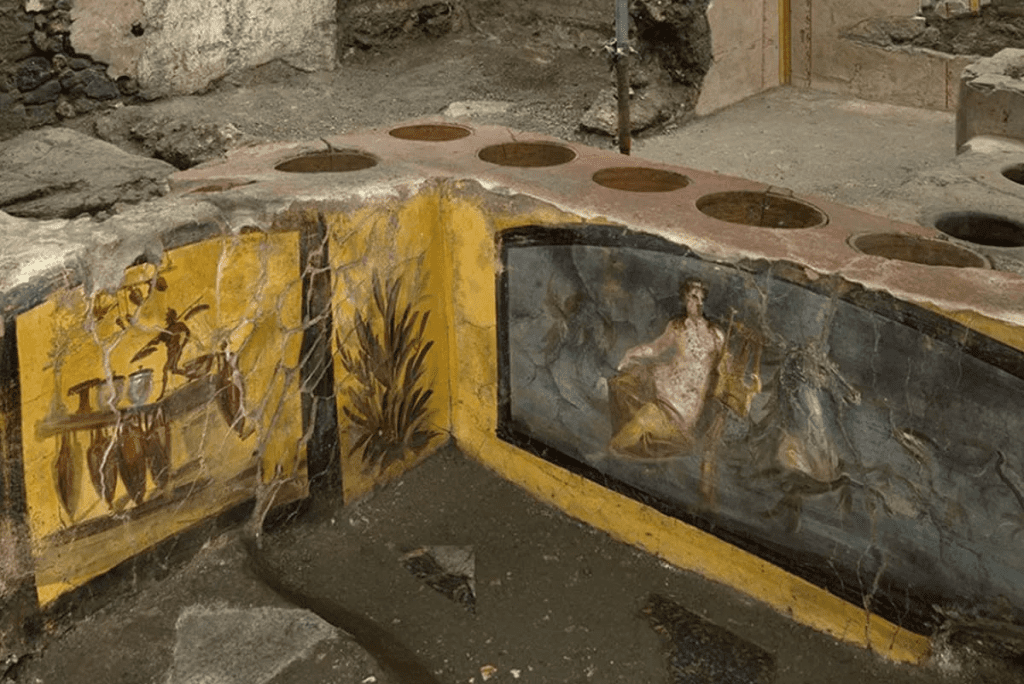
Think of it as a cross between a modern deli and a soup kitchen. Only instead of chalkboards and menus, walls were adorned with frescoes and painted signs showing images of food, drinks, and sometimes even animals or gods associated with feasting. It wasn’t just about hunger it was about atmosphere and experience.
Video:
Manger dans la Rome antique : de la street food à l’auberge
For Rich and Poor Alike
Contrary to what many think, these ancient snack stops weren’t just for the lower classes. While it’s true that many urban Romans didn’t have kitchens at home, especially those living in multi-story apartment buildings (insulae), the thermopolia attracted a wide range of patrons. Rich or poor, locals or visitors everyone stopped in for a quick bite.
Even the wealthy might find themselves at a thermopolium during the day, especially if they were traveling or wanted a particular dish. After all, food in Rome was central to social life. Meals weren’t only about sustenance they were moments of connection, reflection, and indulgence.
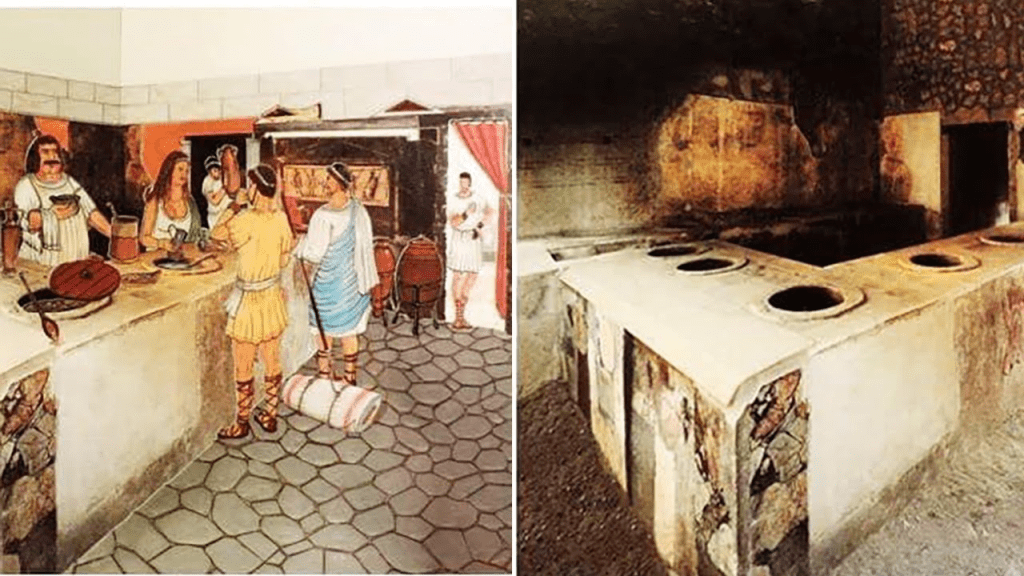
What Was on the Menu?
The Romans were serious about their food. In the thermopolia, typical fare included lentils with sausages, pork in honey sauce, chickpeas with herbs, olives, and warm bread. Dishes were flavored with garum a fermented fish sauce that added a rich, umami punch to almost everything.
And let’s not forget the drinks. Mulled wine, spiced with herbs and served warm, was common. Even simpler options like barley water or diluted wine kept patrons refreshed on hot afternoons.
Many thermopolia served regional dishes, giving people a taste of home or a flavor from far-off provinces. This made them cultural crossroads as much as culinary ones.
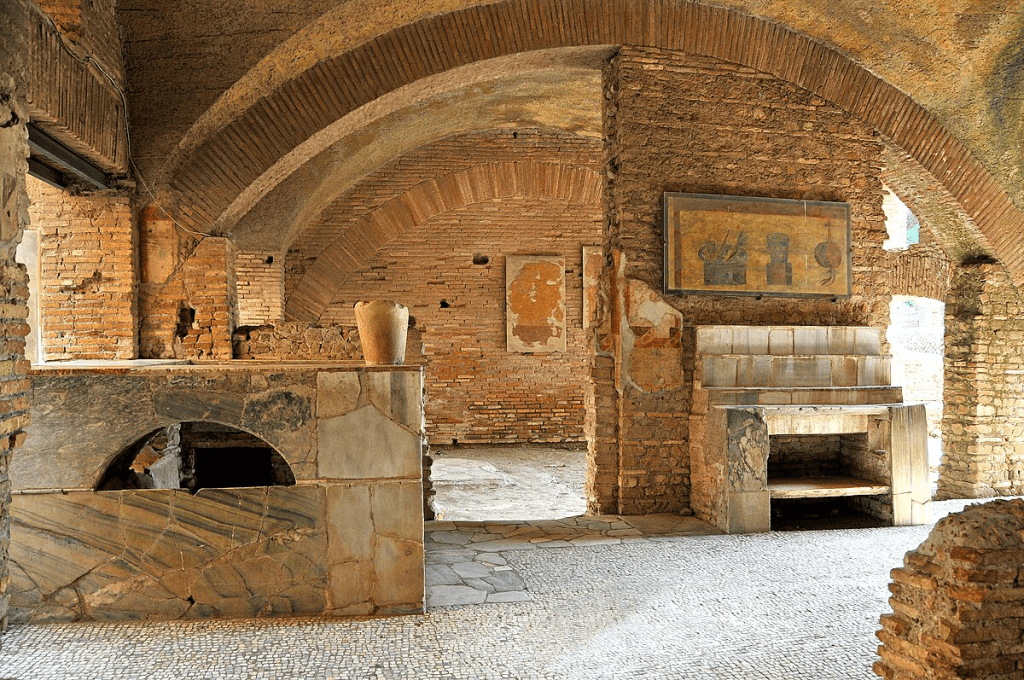
A Place to Gather
The beauty of the thermopolia wasn’t just the food—it was the sense of community. People gathered around counters, exchanged gossip, made deals, or just enjoyed the scent of stew mingling with the city air. With limited space at home, public places like these became daily hubs of Roman life.
There’s a reason archaeologists have uncovered over 150 thermopolia in Pompeii alone. One of the best-preserved even includes colorful frescoes depicting roosters, ducks, and a dog on a leash likely symbols of the menu or the owner’s brand.
Video:
Thermopolium: The Fast Food Restaurants of The Roman Empire
More Than Just a Meal
To the Romans, eating wasn’t just a necessity it was an art. A moment of connection. Thermopolia reflected that beautifully. These small shops made food available to everyone, served with a dash of personality and local flavor. Whether you were a farmer in town for the market or a senator running late for a meeting, the thermopolium welcomed you with open arms and something warm and delicious to eat.
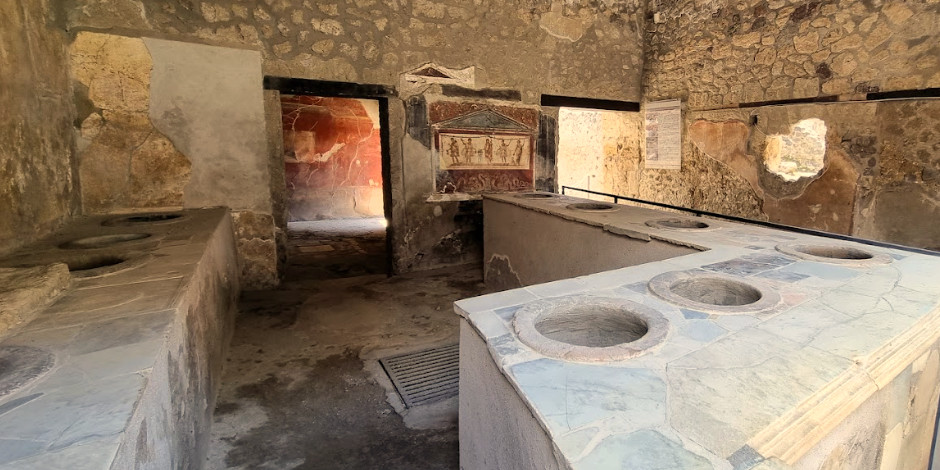
The Lasting Legacy
Today, when we walk into a food court or swing by a food truck, we’re unknowingly taking part in a tradition that started over two thousand years ago. Ancient Rome laid the foundation for the convenience-driven culinary culture we live in now. It’s a powerful reminder that while times change, our love for good food—served fast and shared with others—remains timeless.


